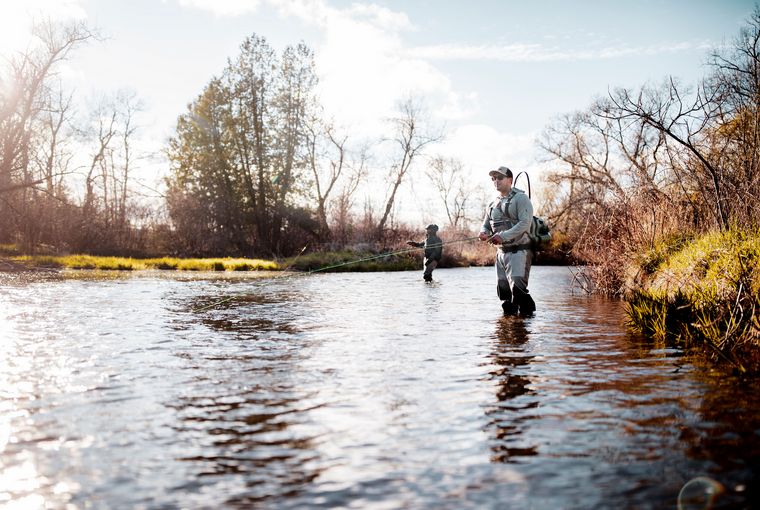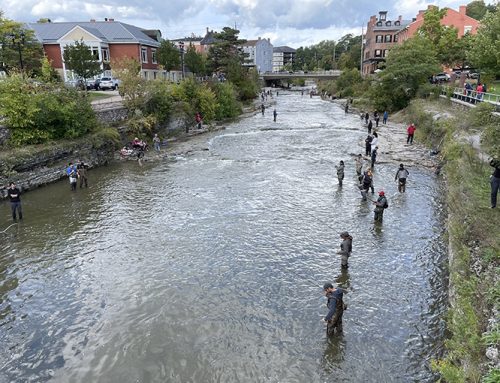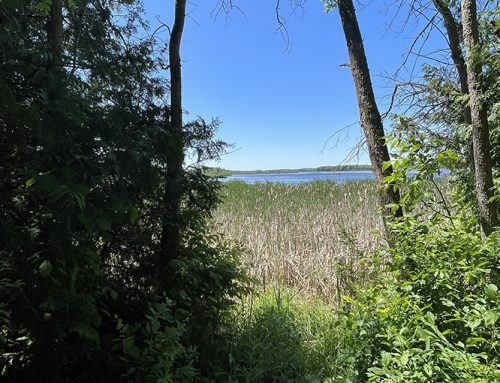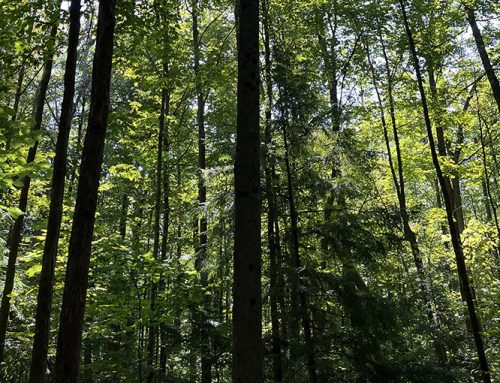
A wastewater treatment plant that may spell the end of the West Credit River’s brook trout fishery could face a federal review.
The Erin Wastewater Treatment Plant, slated to be built this summer, will discharge some 7 million litres of effluent daily directly upstream of native brook trout spawning and nursery areas in the West Credit River near Belfountain and the Forks of the Credit Provincial Park.
It is being opposed by the Coalition of the West Credit River (CWCR), which consists of the Belfountain Community Organization, Izaak Walton Fly Fishing Club, Ontario Rivers Alliance, Ontario Streams, Trout Unlimited Canada – Greg Clark Chapter and the West Credit River Watch. As of press time, the group has gathered more than 16,000 signatures for their Cut the Crap, Keep the Credit petition, opposing the project.
The group believes the facility’s initial Environmental Study Report (ESR) was not transparent about decision processes and deficient in gauging the cumulative impact of population growth, climate change, and how the effluent would affect water temperatures and quality. They say it also failed to consider the UNESCO Niagara Escarpment World Biosphere Reserve less than 700 metres downstream from where the effluent will be discharged. That area is home to several sensitive fish species, including the endangered redside dace and reintroduced Atlantic salmon.
Federal oversight sought
After making no progress at local and provincial levels, the CWCR sought federal oversight.
On March 11, they learned that their petition for a federal impact assessment review of the wastewater facility was successful. The Impact Assessment Agency of Canada is, at press time, conducting an analysis and will make a recommendation to Minister of Environment and Climate Change Johnathon Wilkinson as to whether to designate the project under the Impact Assessment Act. If designated, the minister will provide a response that could impact the project’s outcome.
Judy Mabee, president of the Belfountain Community Organization, said the CWCR recognizes the need for growth in The Township of Erin and Hillsburgh, but believes it should be reasonable and sustainable.
According to the CWCR, the municipal plan to grow the population from its current 4,500 to about 18,873 would be accompanied by a host of issues that could harm the river’s eco-system.
“The Upper Credit is truly one of the last bastions of wilderness in the shadow of urban sprawl, one of the few remaining cold-water streams in southern Ontario that has genuine blue ribbon trout fishing,” Mabee said.
Impact could be great
Ontario Streams Senior Biologist Mark Heaton says the treatment plant would create a 150 to 750-metre effluent plume that would raise dissolved oxygen, ammonia, chloride and temperatures to dangerous levels for brook trout. This could be disastrous, especially during times like summer when water temperatures are already high, water levels are low, and the current slow, since the effluent flow would not be flushed as quickly, he said.
Events such as droughts or excessively hot summers could combine with the plume for an even more devastating impact on brook trout populations, perhaps even wiping them out entirely, Heaton added.
“We shouldn’t be managing fisheries without allowing for these events,” he said.
Heaton said other municipalities have dealt with similar issues successfully and that technology to mitigate these concerns exists.
Those wishing to learn more about the issue should visit www.westcreditriverwatch.ca






Another consideration should be that gross development will cause more run off from rain storms and spring melt, causing possible flooding downstream/river. Already, homeowners in Oakville are expected to pay higher premiums due to similar developments upriver on Bronte Creek..On top of all that, water extracted from the aquafer could very possibly cause wells to dry up, in order to accommodate more populations’ requirements. Nestle was extracting water just west of Hillsburgh village, and some people with dug wells had their wells go dry. Nestle had to cut back on the volume of water they were taking.
There are many springs and marshes in the area, that would be negatively impacted by development. These all feed into the West Credit. Our resources are not infinite.